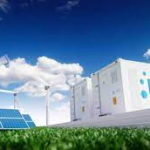 China, the world’s largest steel-producing country, has already announced its carbon-neutrality targets, even as it seeks to find an alternative to producing iron in blast furnaces based on metallurgical coal. Chinese policymakers believe that mass production of hydrogen through renewable electricity and direct production of reduced iron (DRI) through green hydrogen are absolutely essential to decarbonise iron production.
China, the world’s largest steel-producing country, has already announced its carbon-neutrality targets, even as it seeks to find an alternative to producing iron in blast furnaces based on metallurgical coal. Chinese policymakers believe that mass production of hydrogen through renewable electricity and direct production of reduced iron (DRI) through green hydrogen are absolutely essential to decarbonise iron production.
The world’s leading steelmaker Baosteel is moving ahead with its 1 million tonne (mnt) hydrogen DRI plant and has announced its goal of achieving carbon neutrality by 2050 – 10 years ahead of China’s zero-carbon target – based on technologies supplied by Tenova and Danieli.
HBIS, the world’s third largest steel producer, has installed the first hydrogen-powered DRI plant in China, with a capacity of 550,000 tonnes (t) per year. This shows that China is seriously considering hydrogen DRI as the safest and shortest route to sustainability. For its part, Tenova also implemented 100% hydrogen DRI projects in Europe before the technology reached Chinese shores. Hydrogen is indeed the ‘fuel of the future’.
Green hydrogen obtained by splitting water – electrolysis – can replace carbon monoxide as the reducing agent, the only source of emissions in iron production. The transition from the use of ‘smart carbon’ involving carbon capture, utilisation and storage will necessarily involve an intermediate step with natural gas or syngas or biogas as the reducer, or even blue hydrogen with carbon capture incorporated.
Green hydrogen can be obtained by electrolysis and can be used to reduce iron oxide in the manufacture of iron. The goal is to switch from carbon to hydrogen and this is called decarbonisation, but it cannot be done in one go; rather it requires several steps.
For carbon-free hydrogen generation, there are several electrolyser technologies such as proton exchange membranes (PEM) and atmospheric alkaline electrolysers (AAE), with units already in operation for high-purity hydrogen (H2) and energy consumption ranging from 4.8 to 3.8 kW/Nm3 of H2.
High temperature electrolysers (HTE), currently on a smaller scale, use steam and their energy consumption is estimated at 3.6 kW/Nm3 of H2. Currently, the largest PEM and AAE modules are of the order of 4,000 Nm3 of H2, which is sufficient to operate a DR module of about 40,000 to 50,000 t/year, depending on the availability of alternative fuel.
The steelmaking process based on the conventional route of steelmaking, DRI and EAF using natural gas can also adopt hydrogen, if available, which could replace methane. The main thrust should be on renewable energy, both wind and solar.
The transition to ‘carbon direct avoidance’ would necessarily mean working towards a green DRI powered by hydrogen produced from renewable sources.
However, adopting hydrogen for a hard-to-retire sector like steel would require the implementation of policies such as large-scale availability and cost reduction, easy transport and storage, policy formulation regarding a carbon trading market and a marked preference for fossil-free steel in public procurement.
.gif) Loading
Loading

